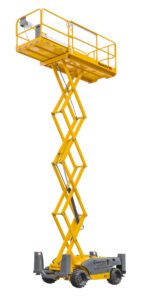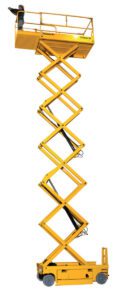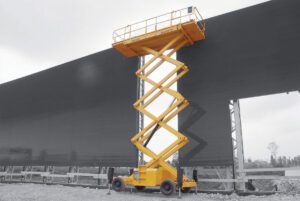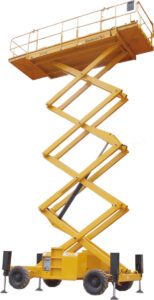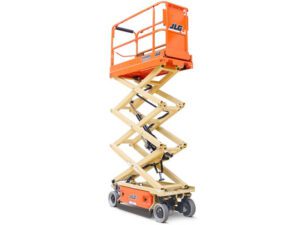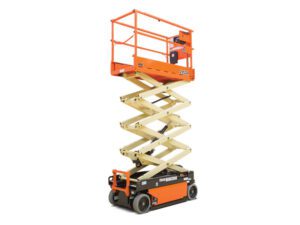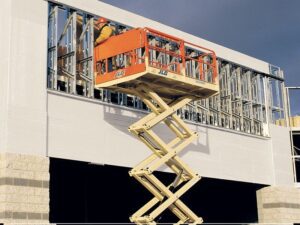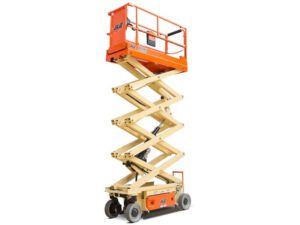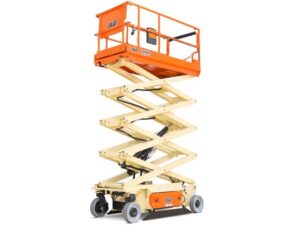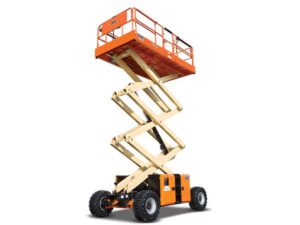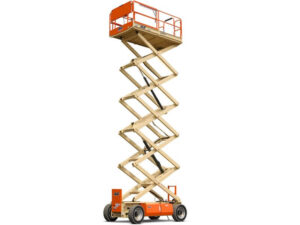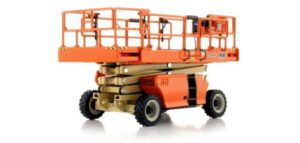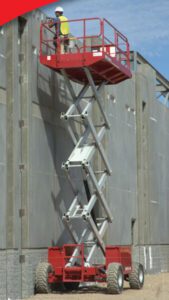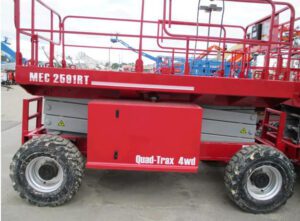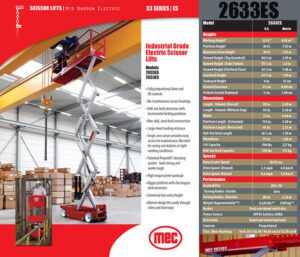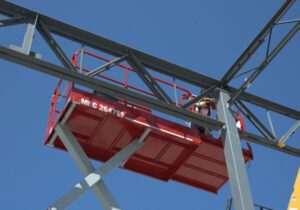Showing 49–64 of 91 results


Scissor Lifts
CanLift offers new and used scissor lifts for sale. Call us today at 1-877-338-5438 or contact us using the form below – operators are standing by and we ship worldwide!
QUICK QUOTE
Your privacy is very important to us. We do not sell, share, or
distribute any of your personal information with any third parties.
Please read our privacy policy for more information
Scissor Lifts for Sale in Canada
CanLift Equipment Ltd offers a wide assortment of scissor lifts for sale in Canada and throughout North America. Our network of equipment supply partners across North America gives us the ability to offer a superior selection of hydraulic scissor lifts, traditional and electric scissor lift equipment at extremely competitive prices.
LARGE SELECTION OF SCISSOR LIFTS
CanLift has one of the largest selections of scissor lifts and scissor lift equipment in Ontario from some of the top brands in North America. Whether you need a rough terrain 4×4 model for tougher jobs, a compact model for hard to fit places, or a diesel or electric scissor lift, CanLift ensures you will get the best aerial scissor lift for your project.
BUY A SCISSOR LIFT ONLINE
CanLift is dedicated to providing reliable and fast delivery of the best hydraulic scissor lifts and electric scissor lift equipment available. Our focus is on customer satisfaction and building long-lasting relationships and partnerships with all of our clients, whether they’re a small retail customer, large wholesale business or international importer.

Satisfaction is guaranteed.
Contact our sales and rental team today for a free, no-obligation quote on scissor lifts.
Frequently Asked Questions about Scissor Lifts
What are scissor lifts typically used for?
Scissor lifts and aerial scissor lifts are versatile machines used for completing tasks at elevated heights. One primary application is in construction projects, where scissor lifts play a crucial role in providing access to elevated work areas in a safe manner. Scissor lifts can be used to install ceiling fixtures, paint walls, or conduct repairs in buildings. The mobility and vertical reach of a scissor lift machine makes it a valuable tool in navigating construction sites with different elevation levels and access needs. In maintenance and facility management, scissor lifts are frequently employed for tasks such as changing light bulbs, repairing HVAC systems, or conducting routine inspections in hard-to-reach places. The ability of scissor lifts to reach heights safely and provide a stable platform for work makes them essential in maintaining buildings, warehouses, and other facilities. Scissor lifts are widely used in warehouses and distribution centers to store and fill inventory. Operators can use scissor lifts to access and retrieve items stored on high shelves or conduct inventory checks efficiently. Scissor lifts find applications in the realm of events and entertainment. Lifts are utilized for setting up stages, lights, and sound equipment during events where elevation is required. The flexibility and ease of use of scissor lifts make them invaluable tools for event organizers to create dynamic and visually appealing setups with a safe approach. Scissor lifts are typically used for major tasks that involve working at heights, offering a safe and stable platform. Scissor lifts cover a wide range of applications across construction, manufacturing, maintenance, retail, warehouse operations, aviation, hospitality, event management, and so much more. Adaptability and mobility make scissor lifts indispensable and reliable tools across a range of industries.
How high can scissor lifts go?
The maximum height a scissor lift can reach depends on its specific model and features. Smaller scissor lifts, often used indoors or in compact spaces for warehouse or gymnasium operations, may have a maximum height of around 10-20 feet (3-6 meters). Medium-sized scissor lifts, suitable for a large range of applications, can reach heights between 20 and 40 feet (6 to 12 meters). Larger scissor lifts, designed for heavy-duty tasks including construction sites, may extend beyond 50 feet (15 meters) in height. It's essential to note that the capacity and height specifications can vary among different scissor lift models and manufacturers. Scissor lifts are designed to elevate workers and materials to various heights that depend on the needed applications. Some scissor lifts come equipped with outriggers or stabilizers to enhance stability when elevated over rugged terrain.
Is training required to operate a scissor lift?
Yes, training is required for operating a scissor lift safely. The training process is designed to equip individuals with the necessary knowledge and skills to use the scissor lift efficiently and prevent potential accidents. One important aspect covered in the training is understanding the controls of the scissor lift. These controls–often in the form of buttons or levers and quite easy to use–enable operators to maneuver the lift, controlling its ascent, descent, and movement in a safe manner. Safety measures constitute a significant part of the training to operate a scissor lift, emphasizing the importance of specific rules to avoid accidents. This includes wearing the appropriate safety gear and adhering to all safety and operating guidelines often specific to the model that has been selected. The training addresses emergency procedures, ensuring operators are well-versed in responding calmly and safely to unexpected events such as power failures or sudden malfunctions of the lift. Routine inspections are also emphasized during the training, teaching operators how to conduct pre-use checks to ensure the scissor lift is in optimal condition. This proactive approach helps prevent potential malfunctions and ensures the equipment's reliability plus helps to extend its life. Since scissor lifts involve working at greater heights, the training provides valuable insights into maintaining safety at elevated positions. Scissor lift training covers legal requirements and regulations for operation. This knowledge ensures compliance with safety standards and legal obligations associated with scissor lift operations. Scissor lift training is a comprehensive process that not only imparts operational skills but also instills a safety-first mindset. The training promotes a secure working environment for operators and those in the vicinity of scissor lift equipment.
What sizes do scissor lifts come in?
Scissor lifts come in various sizes built to suit different tasks and working environments. Aerial scissor lifts range from compact models with lower height capacities to larger, more robust lifts capable of reaching greater heights. The smallest scissor lifts are often designed for indoor use, fitting through standard doorways and narrow spaces. These compact scissor lifts are handy for tasks like maintenance, painting, or installing fixtures in offices or warehouses where space is limited. Mid-sized scissor lifts are versatile, offering a balance between height reach and maneuverability. Mid-sized machines are commonly used in construction projects, facility maintenance, and other settings where a moderate lift capacity is needed. Mid-sized scissor lifts can handle tasks at various elevations in a range of environments and are suitable for both indoor and outdoor applications. For more extensive projects that require reaching even greater heights, larger scissor lifts are available. Large, heavy-duty scissor lifts are designed for outdoor use and can handle substantial loads. Construction sites, large-scale maintenance projects, and industrial settings often benefit from the extended height capabilities of larger scissor lifts. Scissor lifts come in sizes ranging from compact models to mid-sized and up to larger, heavy-duty lifts. The choice of aerial scissor lift size depends on the specific requirements of the job, the available space, and the desired height reach.
Are scissor lifts drivable?
Yes, scissor lifts are quite drivable. They are equipped with controls that allow operators to drive them easily from one location to another. The drivability is facilitated by a system of wheels or in some instances, tracks beneath the scissor lift platform. Typically, scissor lifts use electric or hydraulic motors for propulsion and the controls are designed for ease of use. The driving functionality is essential for repositioning the lift to and within different work areas on a construction or job site without the need for additional equipment. The controls for driving a scissor lift are usually straightforward, consisting of a steering mechanism and a throttle for forward and backward movement. This drivability is especially useful in settings where tasks are spread across various locations or floors, allowing operators to easily navigate the lift to the required spot with efficiency. It is important to note that scissor lifts are not designed for high-speed travel or highway driving. The primary function of a scissor lift machine is to provide vertical access to elevated work areas. The drivability feature mainly allows for the repositioning of the lift for efficient and flexible use on job sites. Scissor lifts are conveniently positionable, offering operators the benefit of mobility to navigate and position the lift as needed for different tasks and locations.


